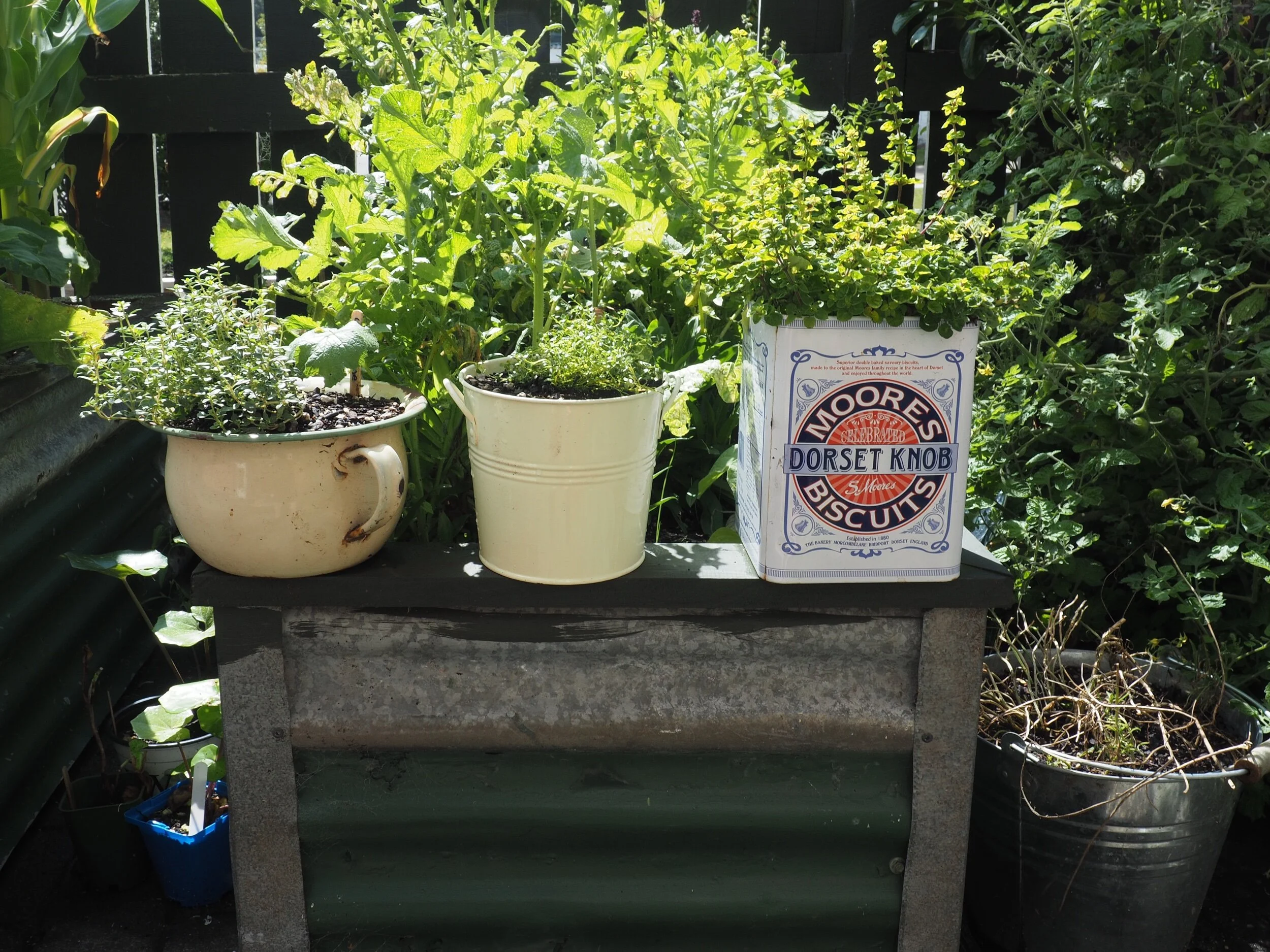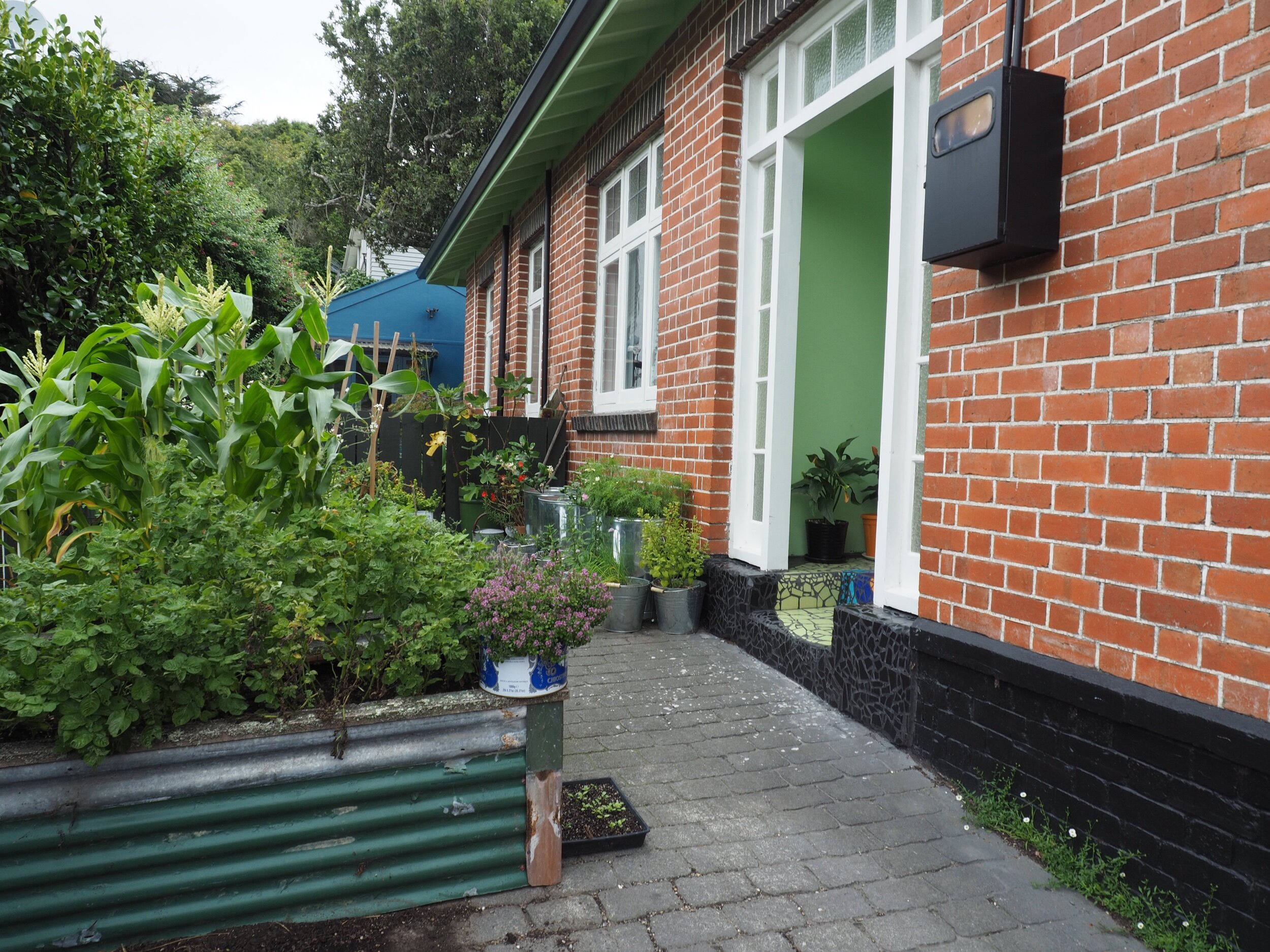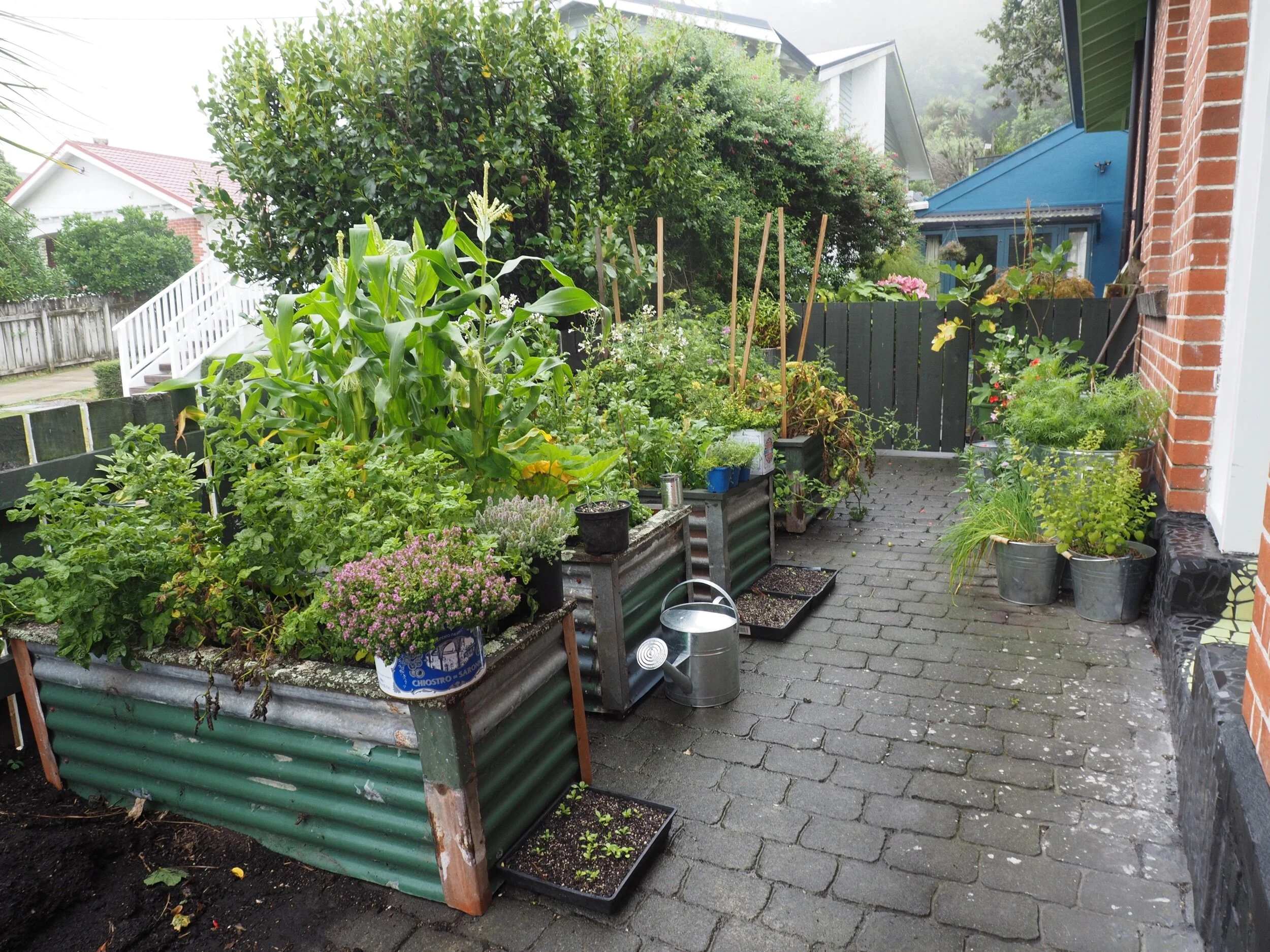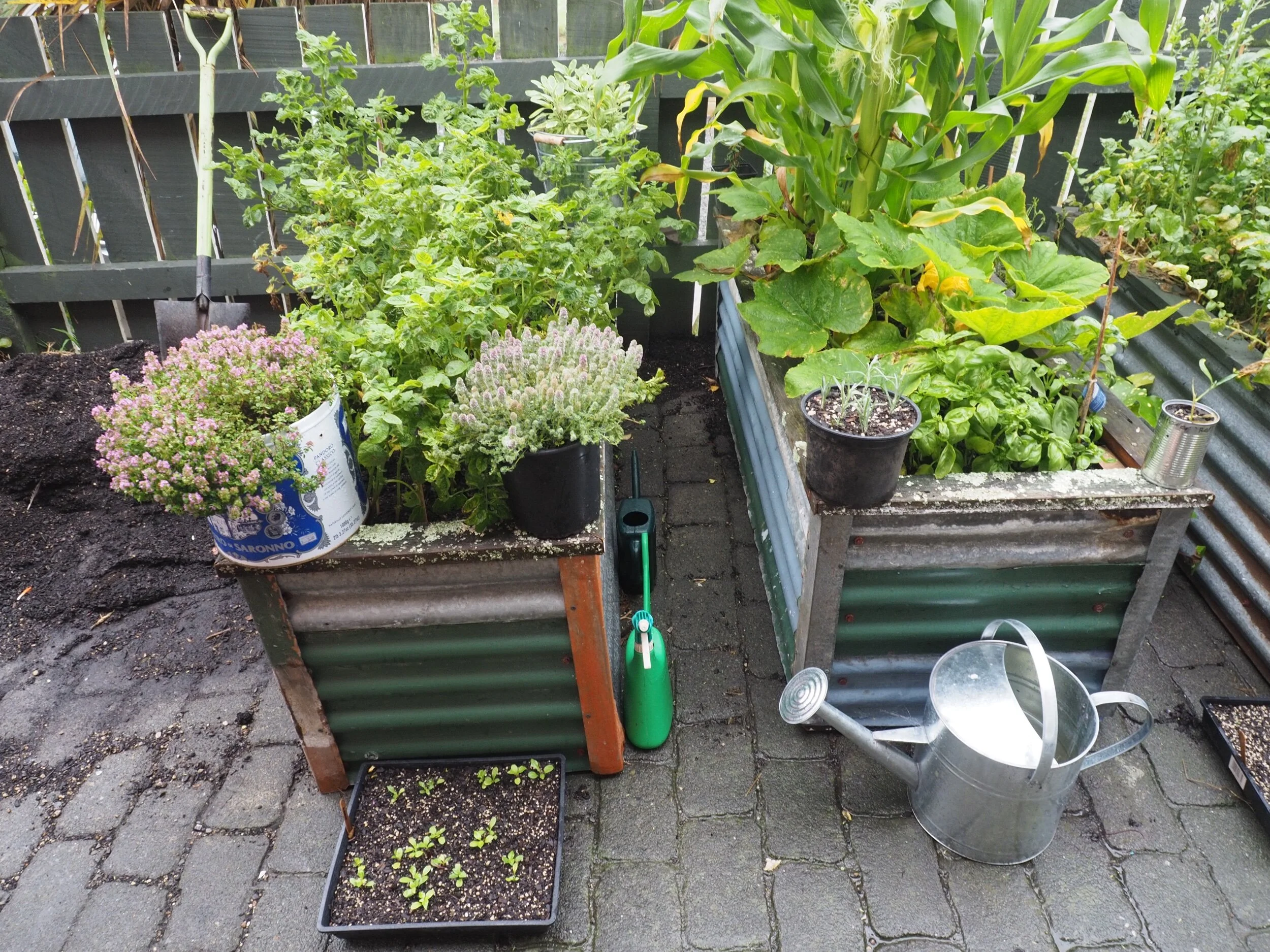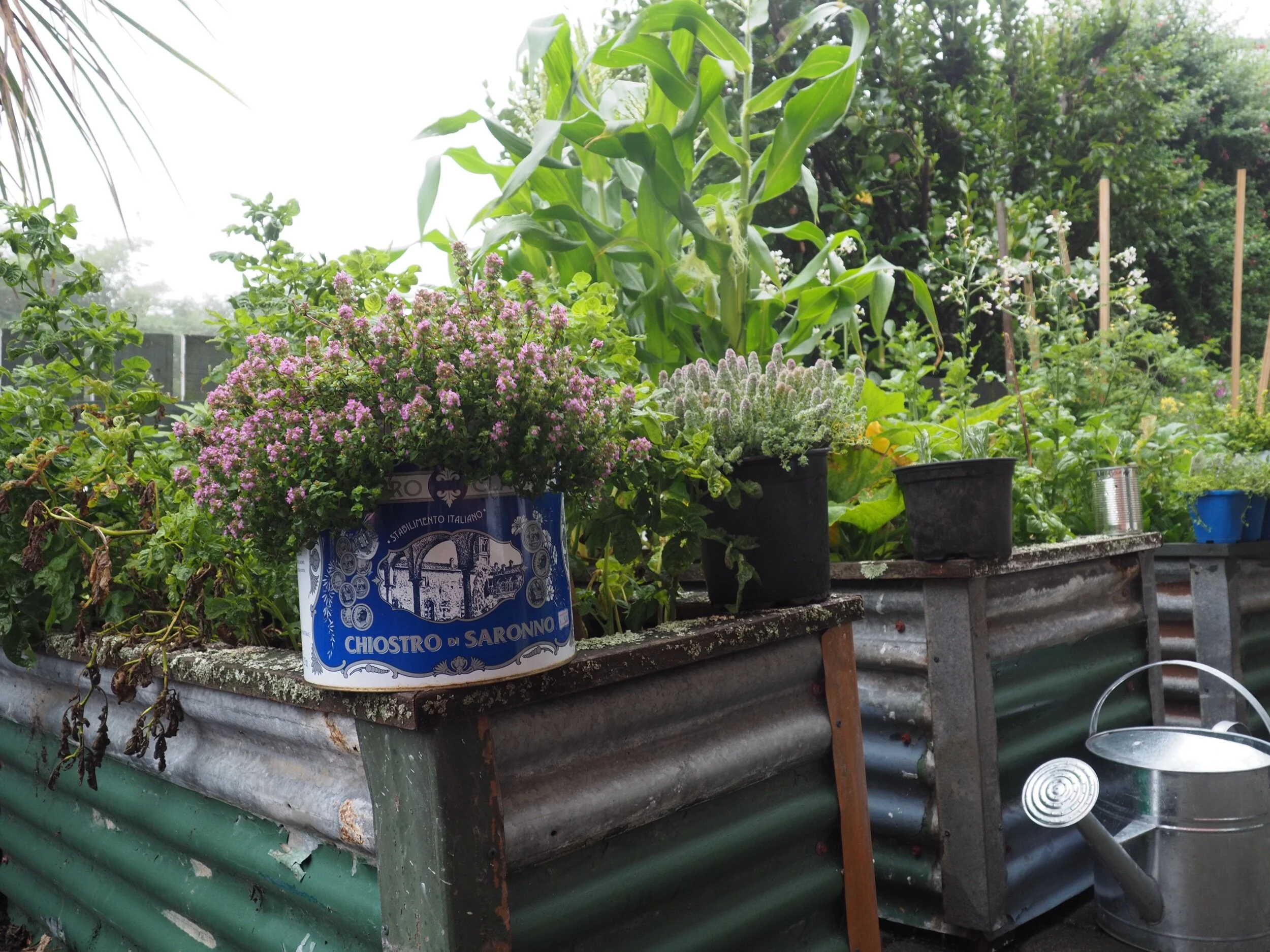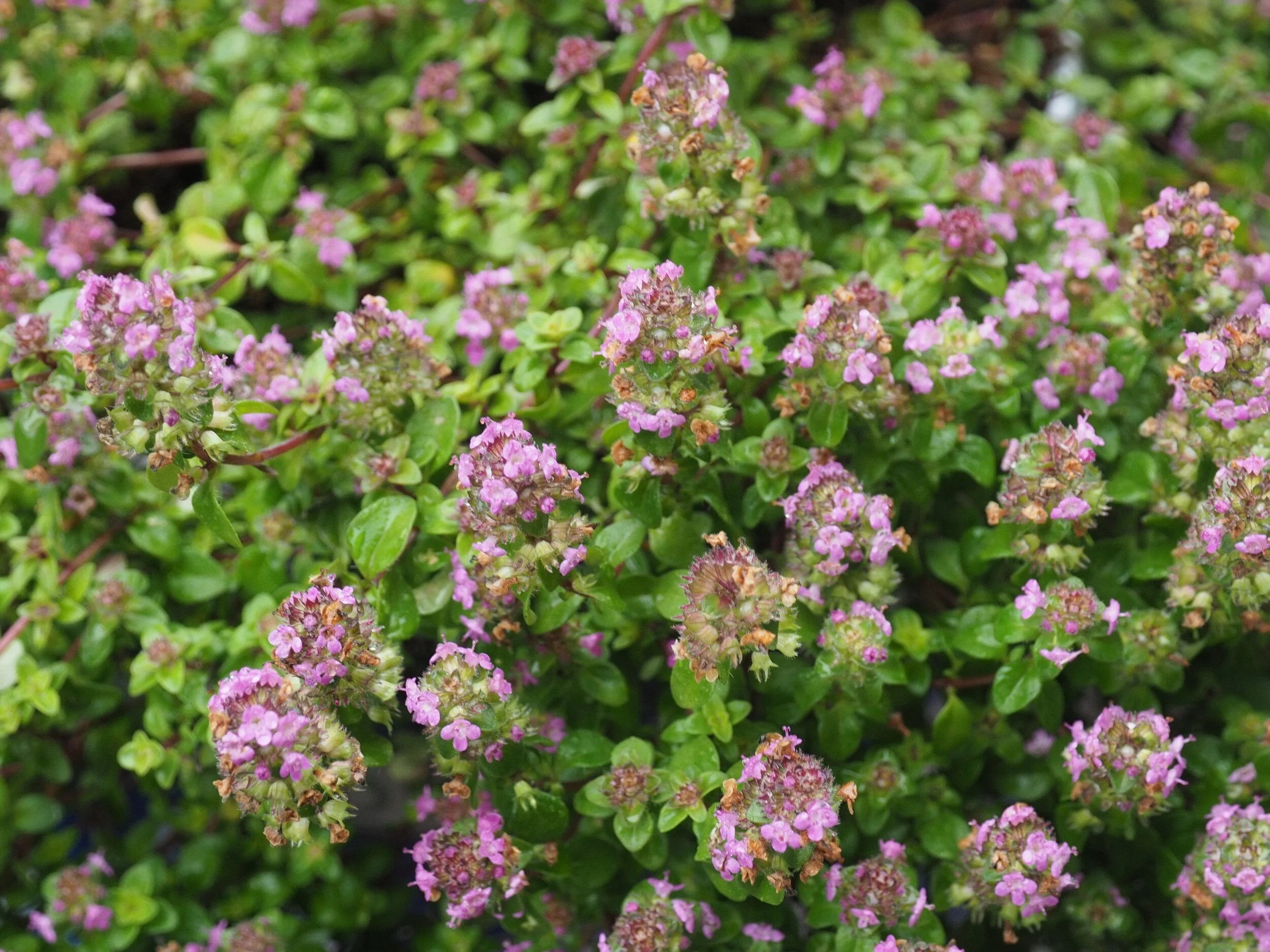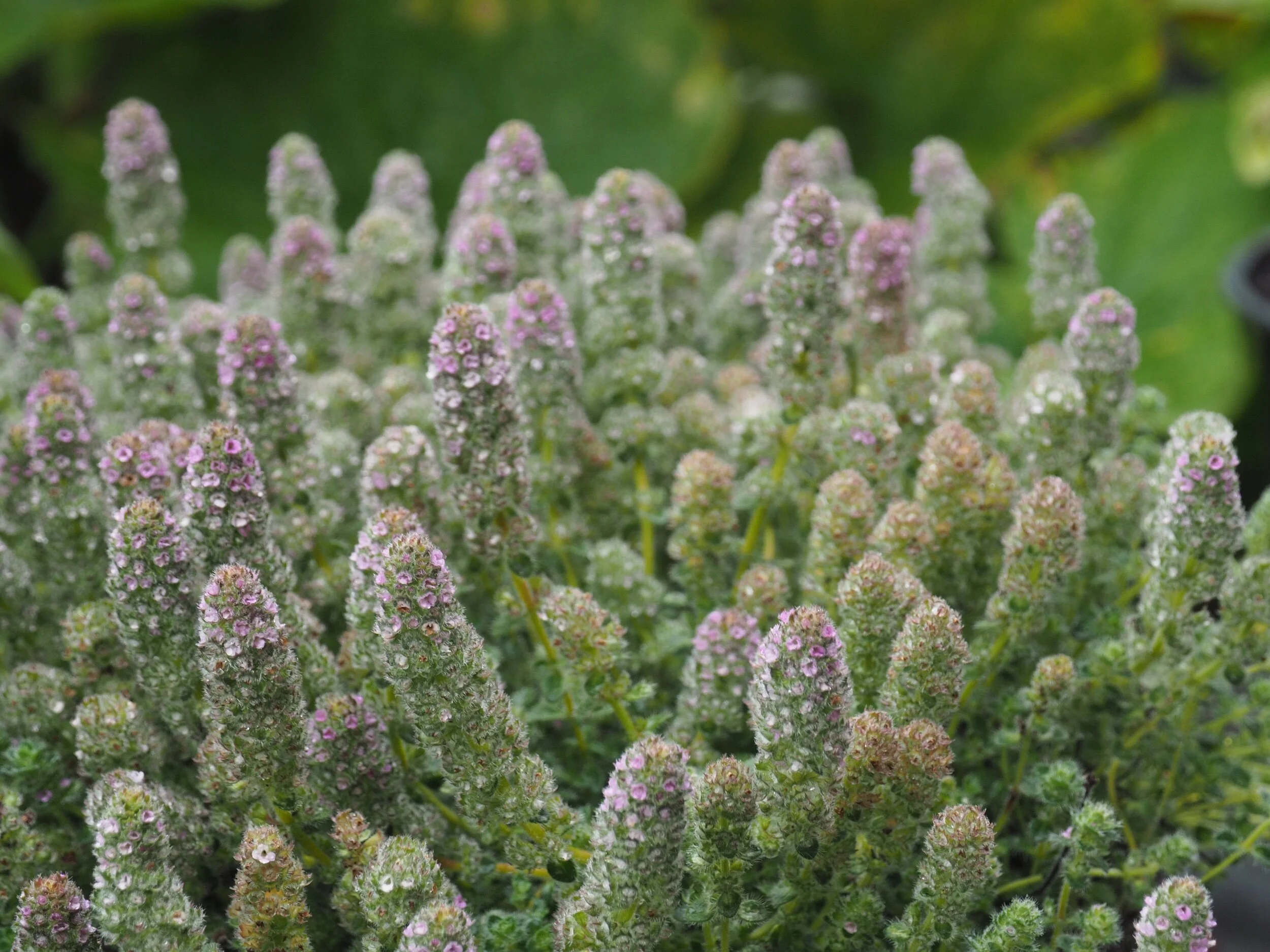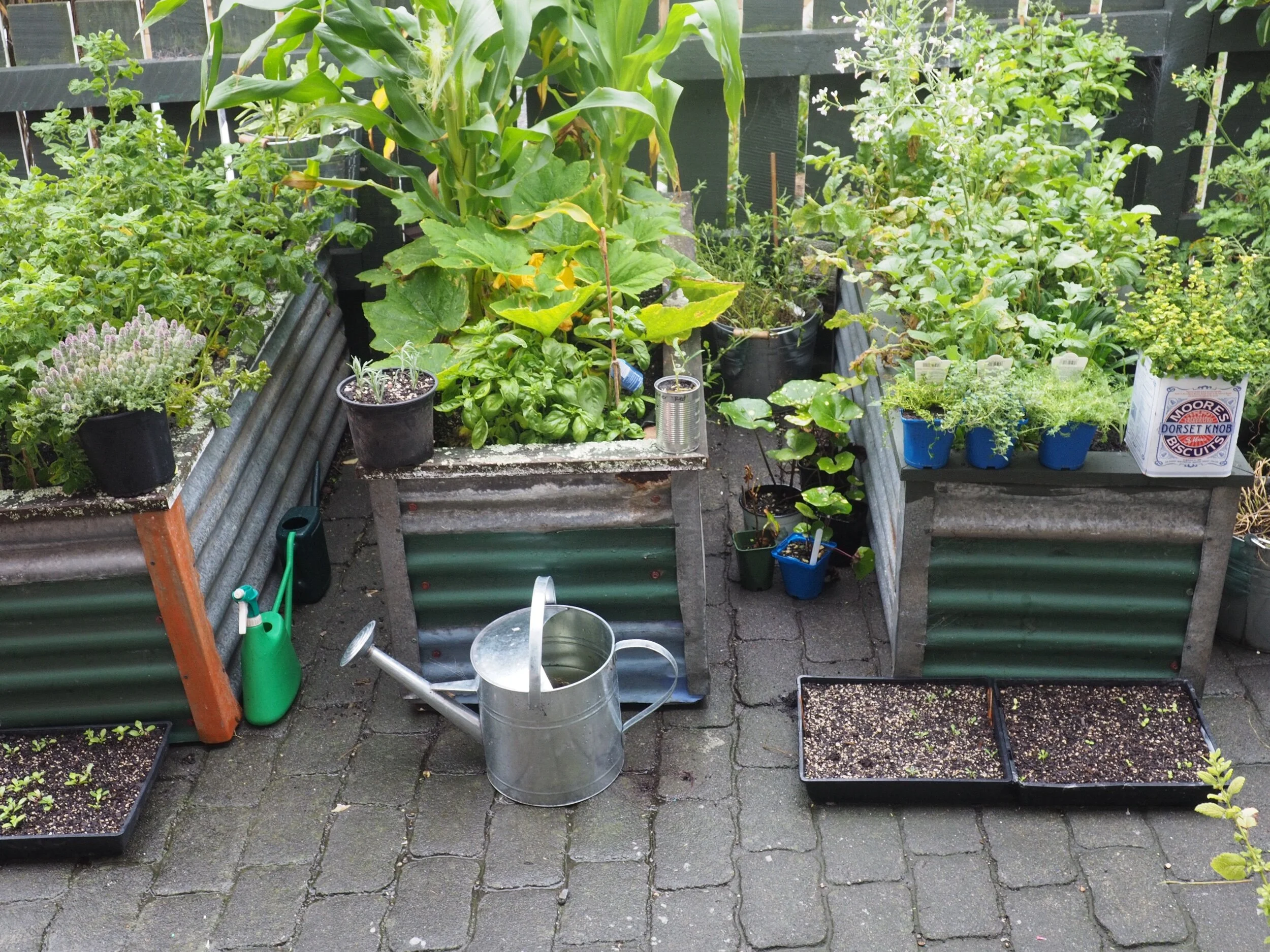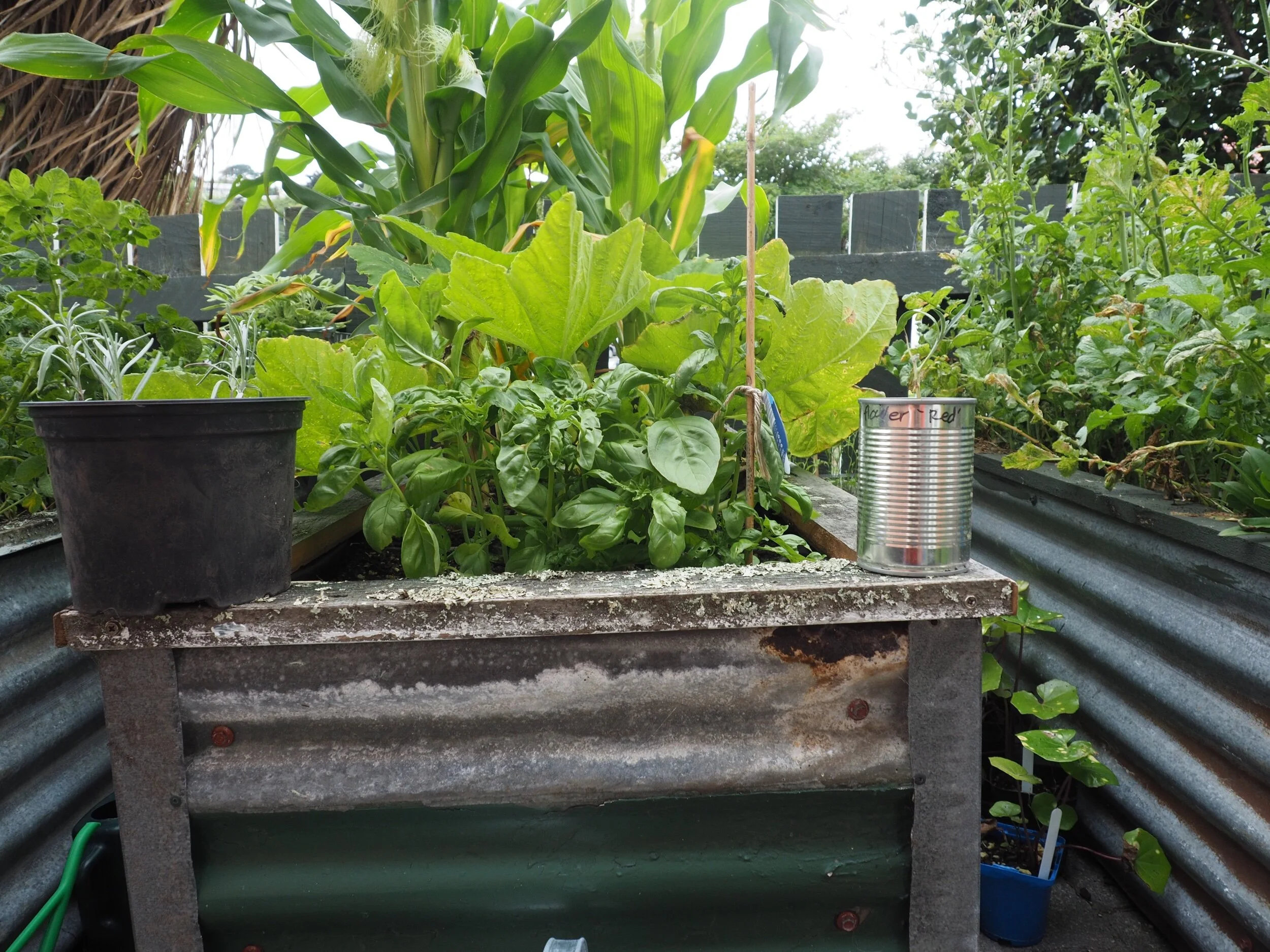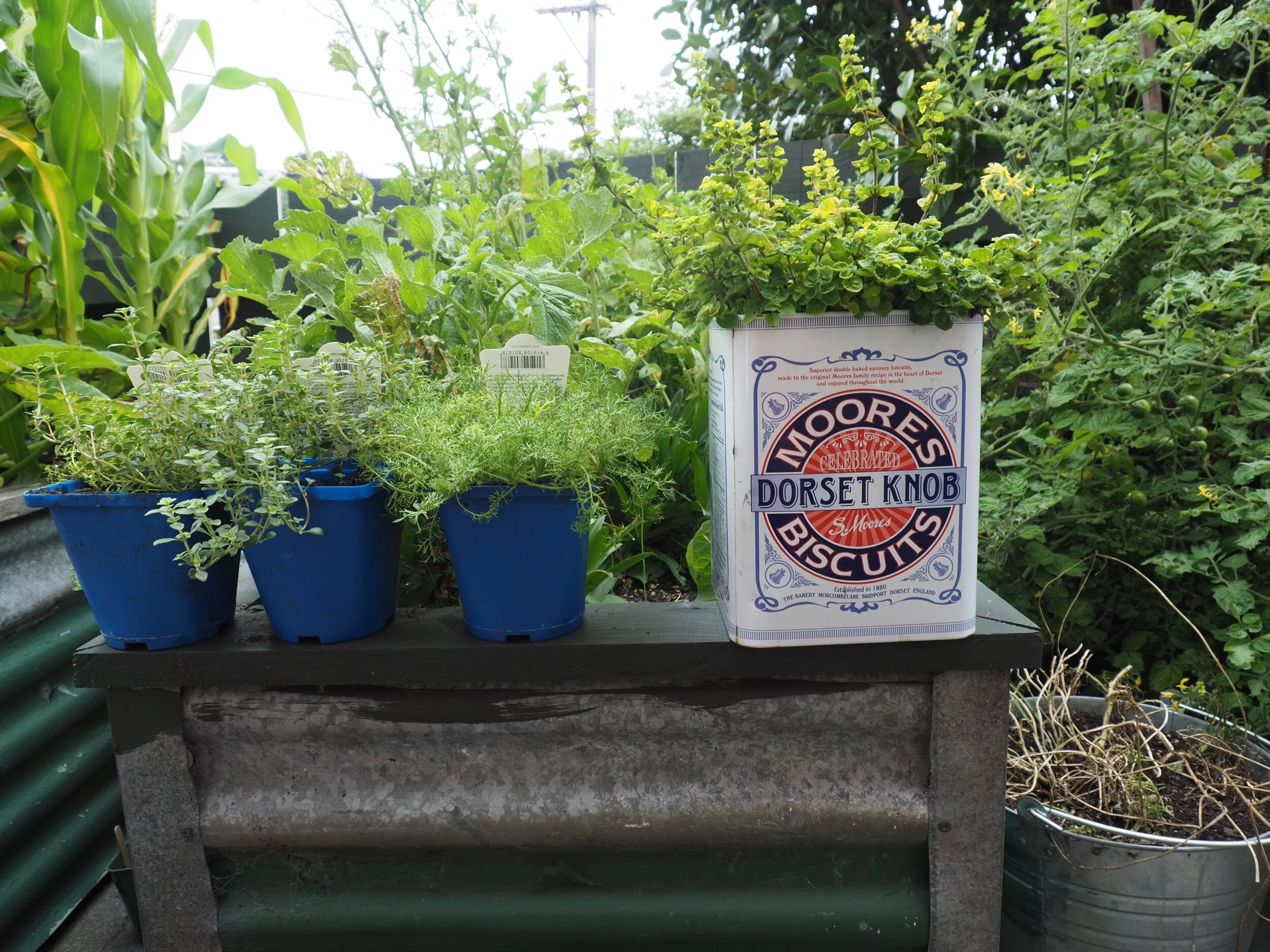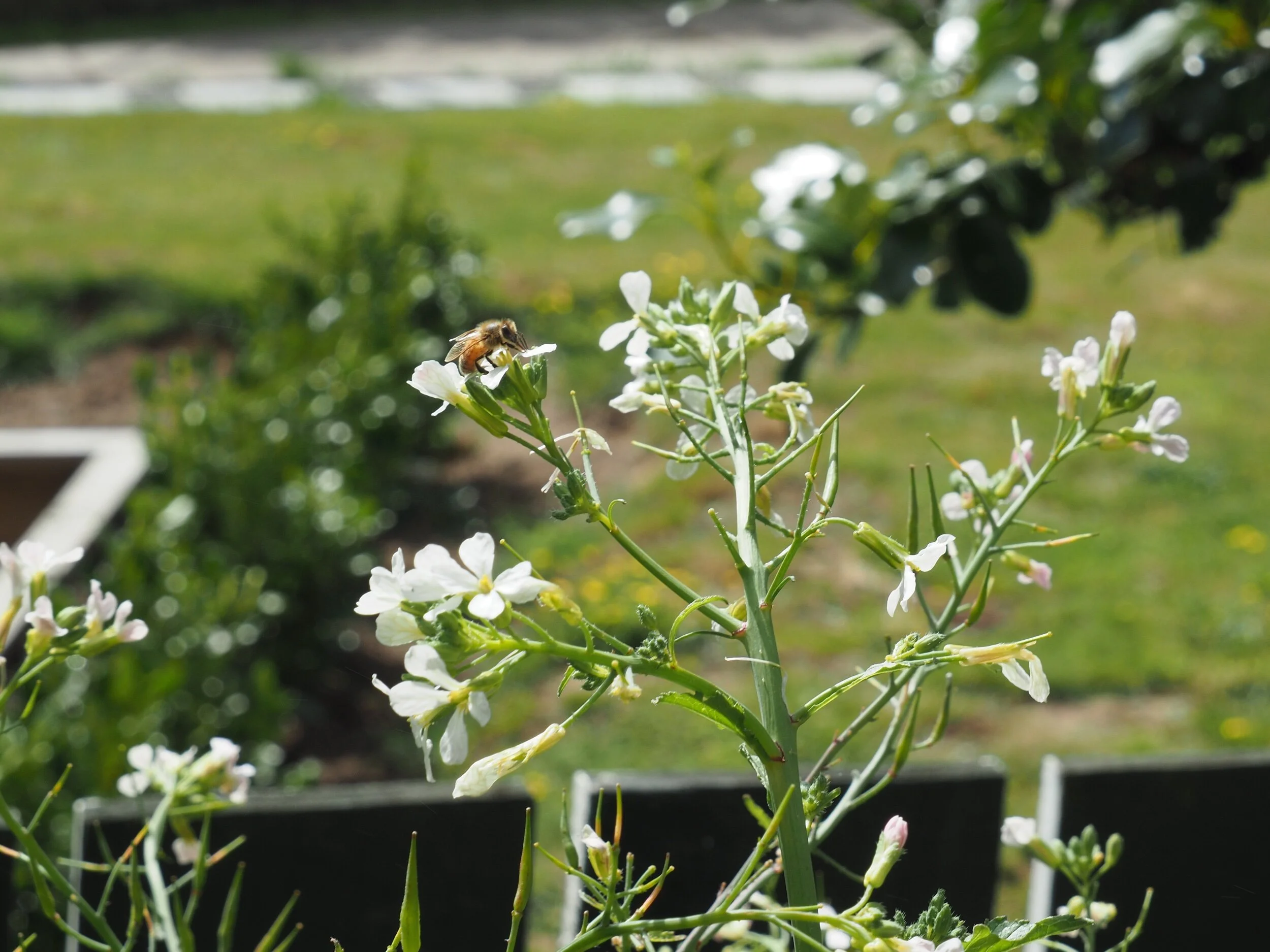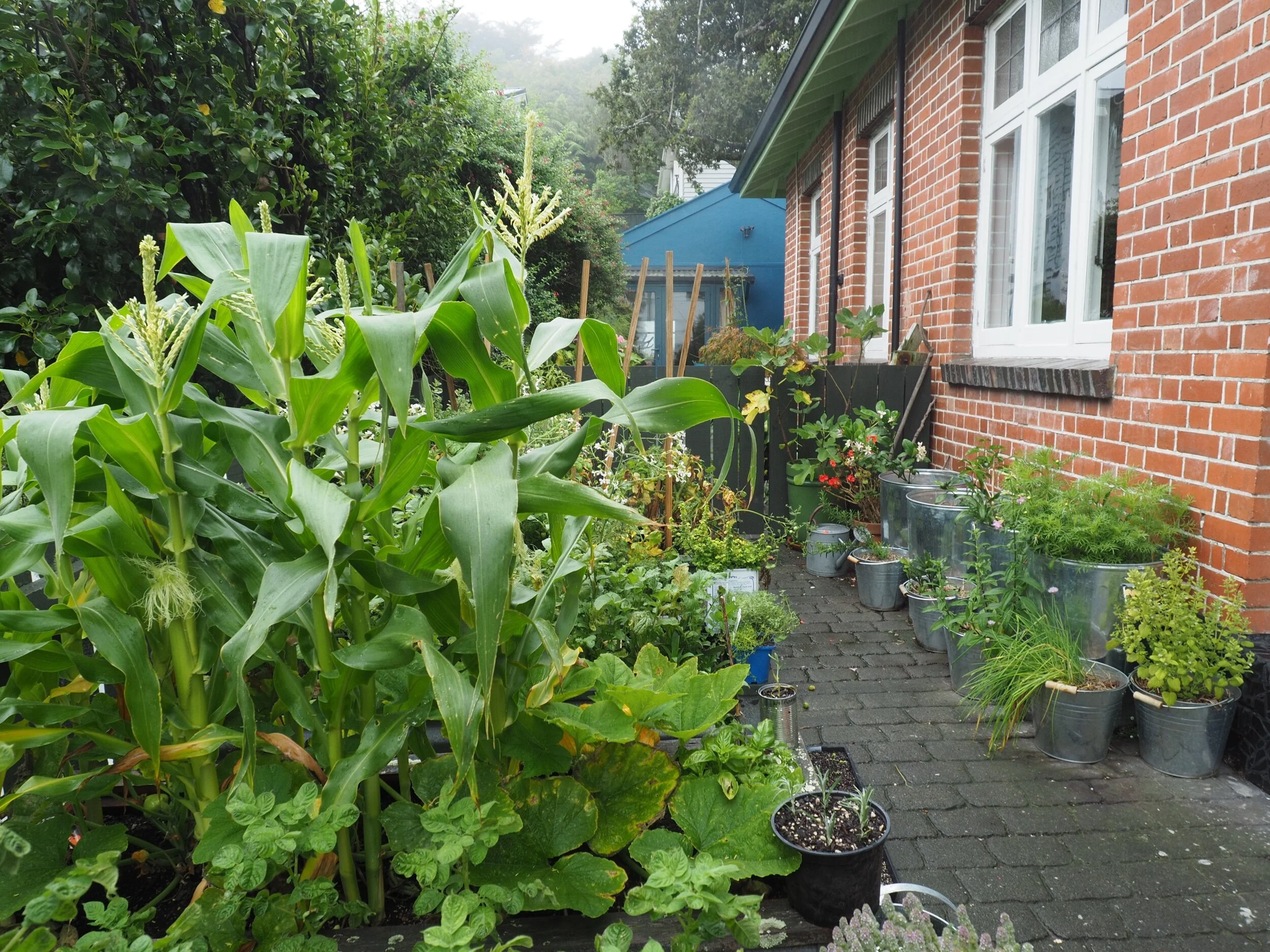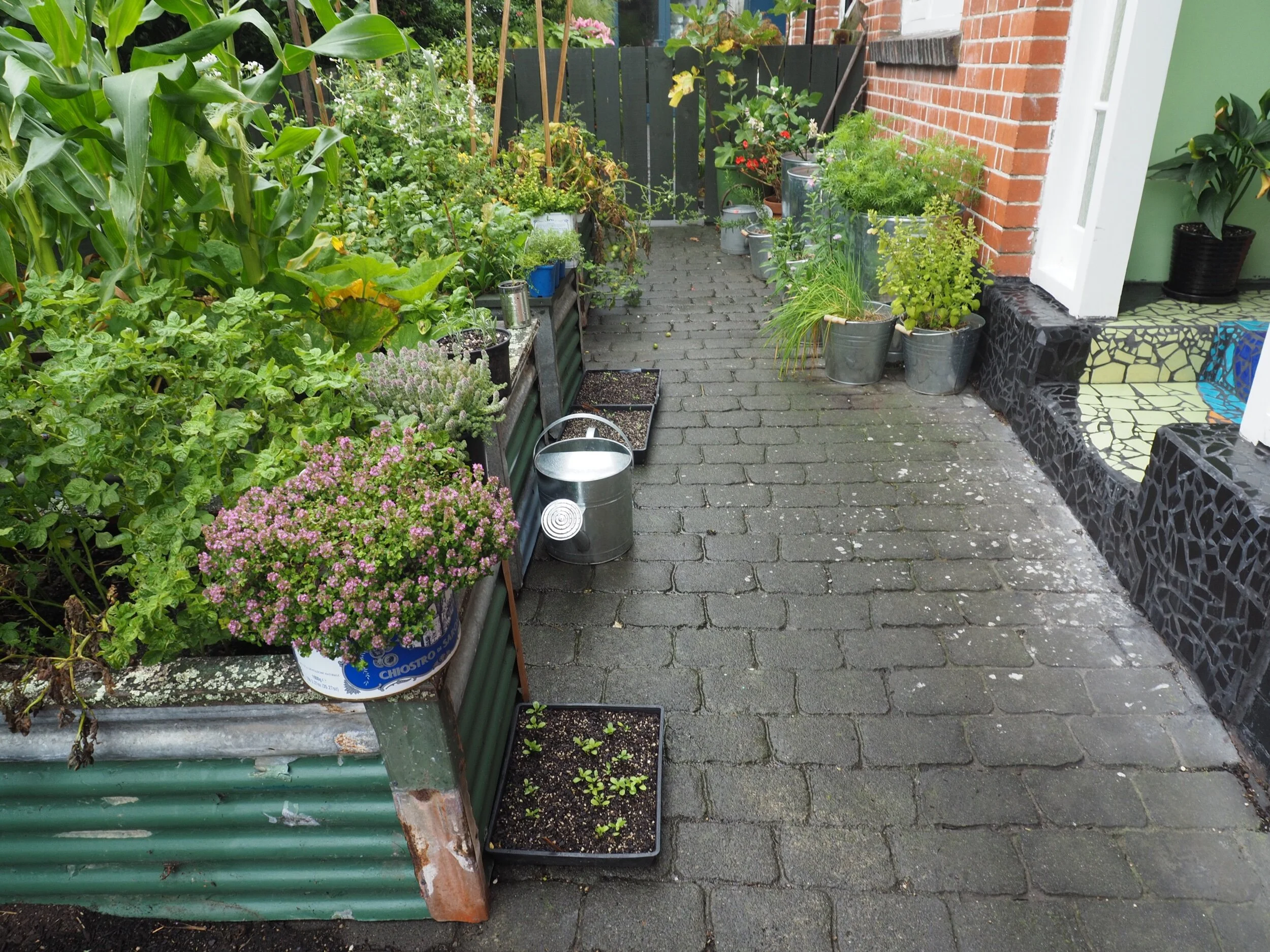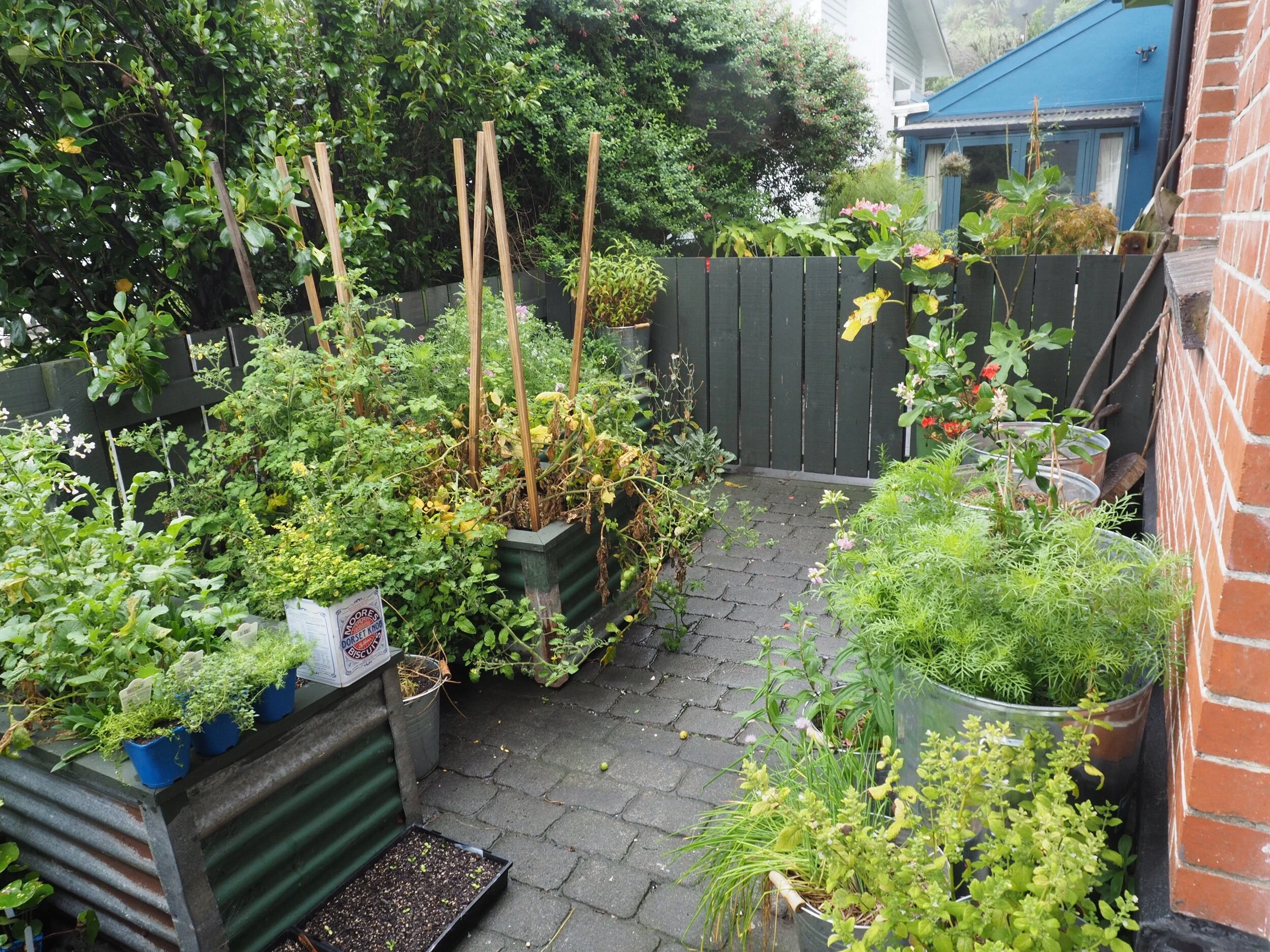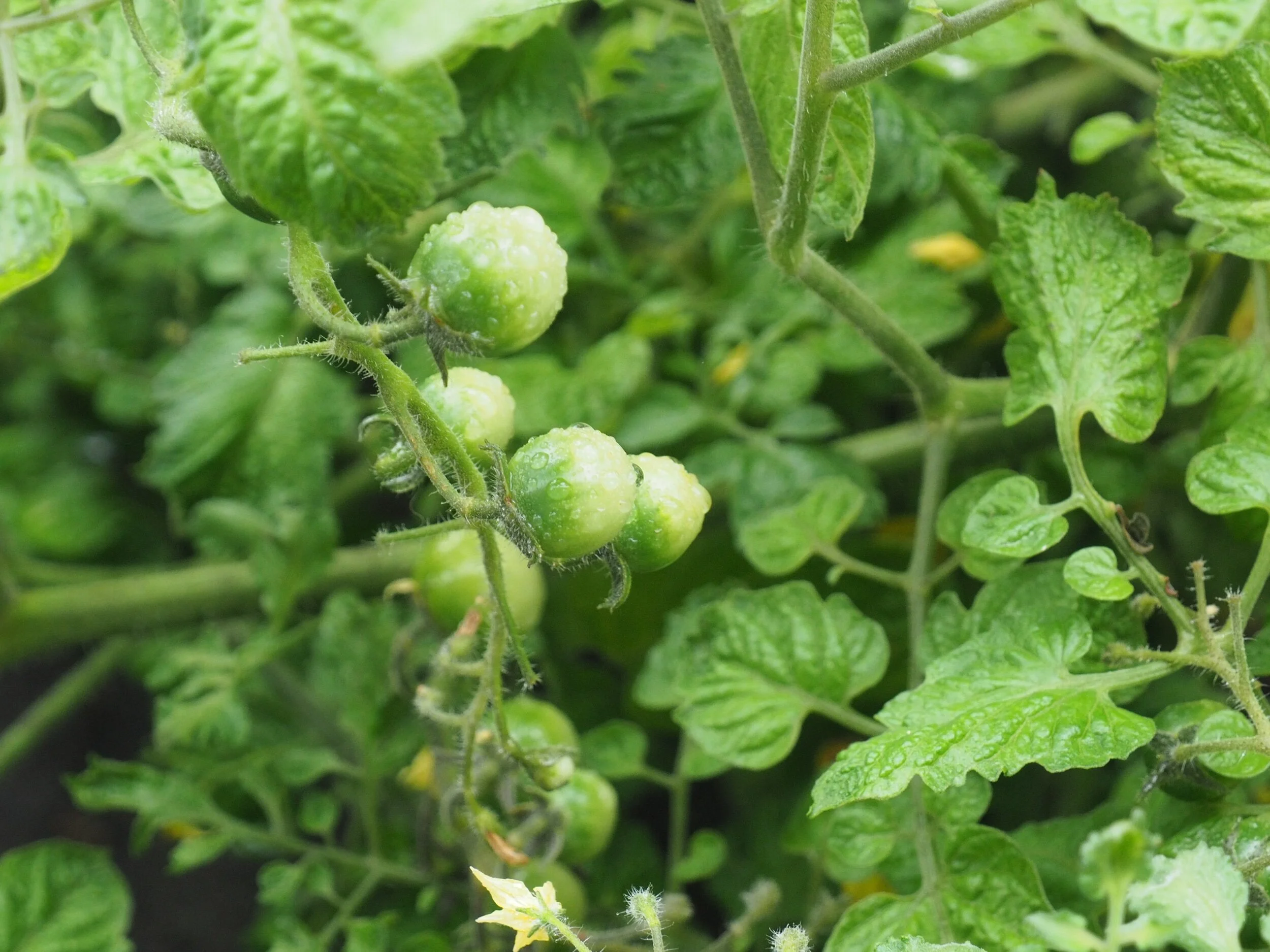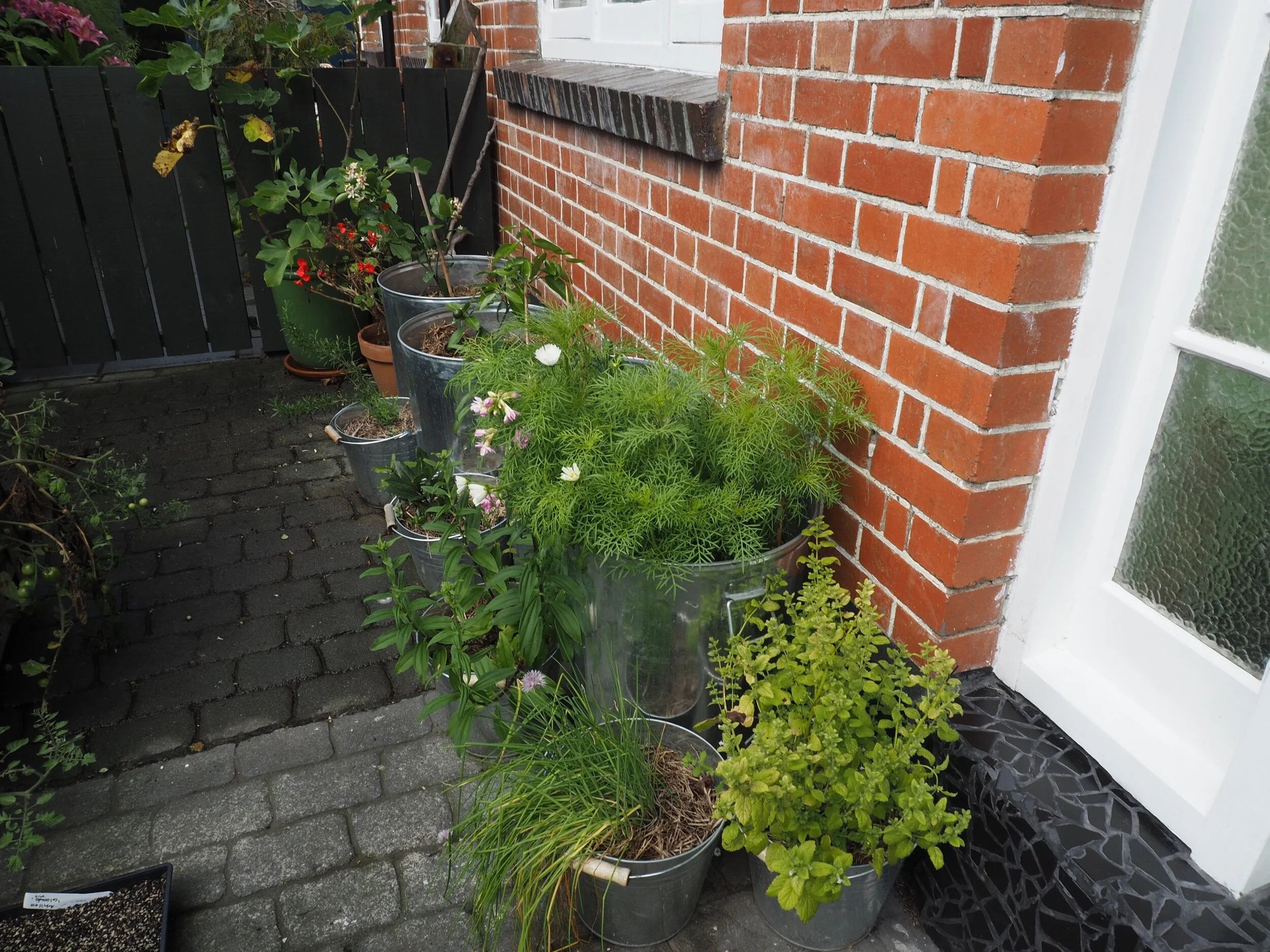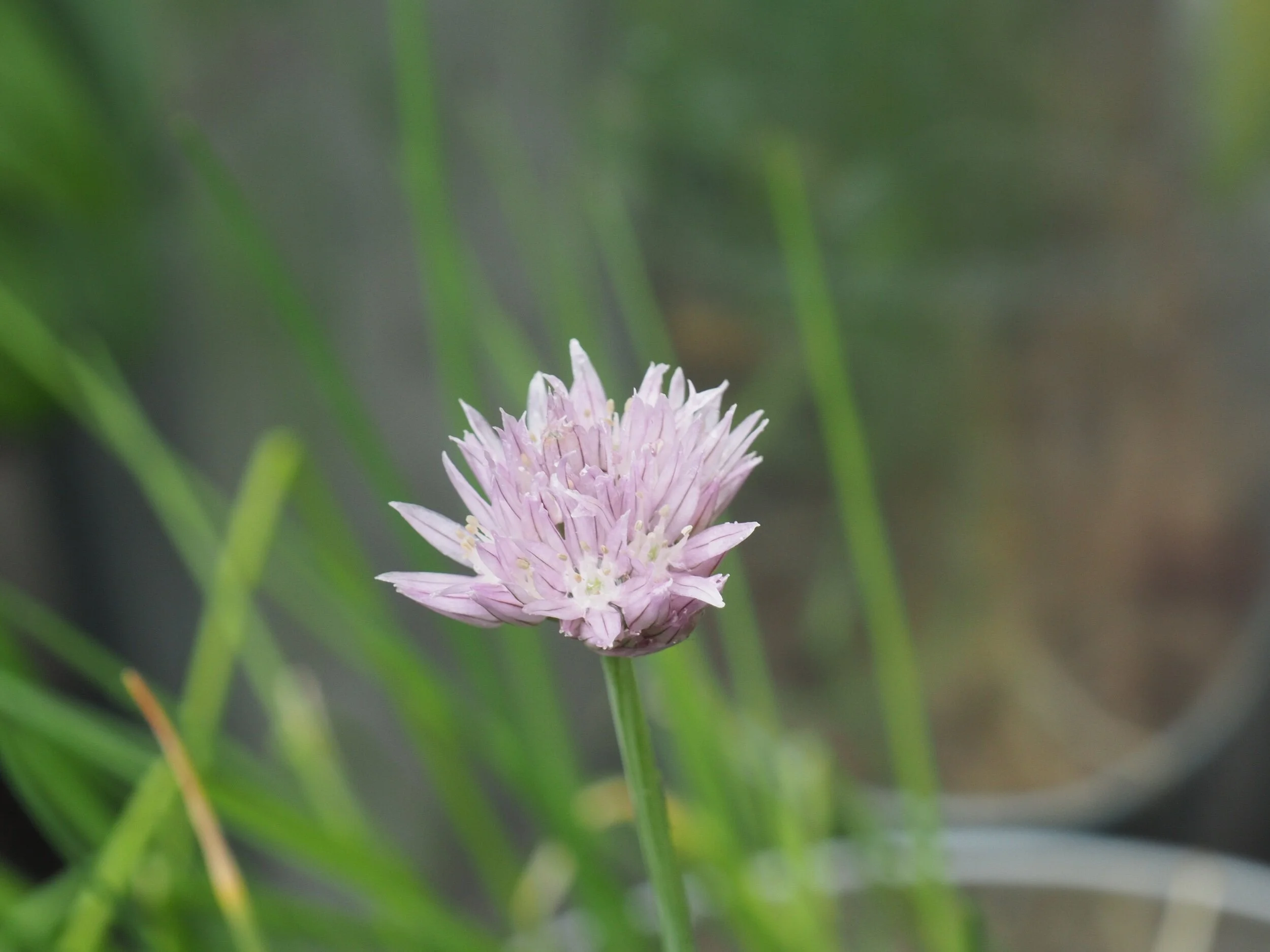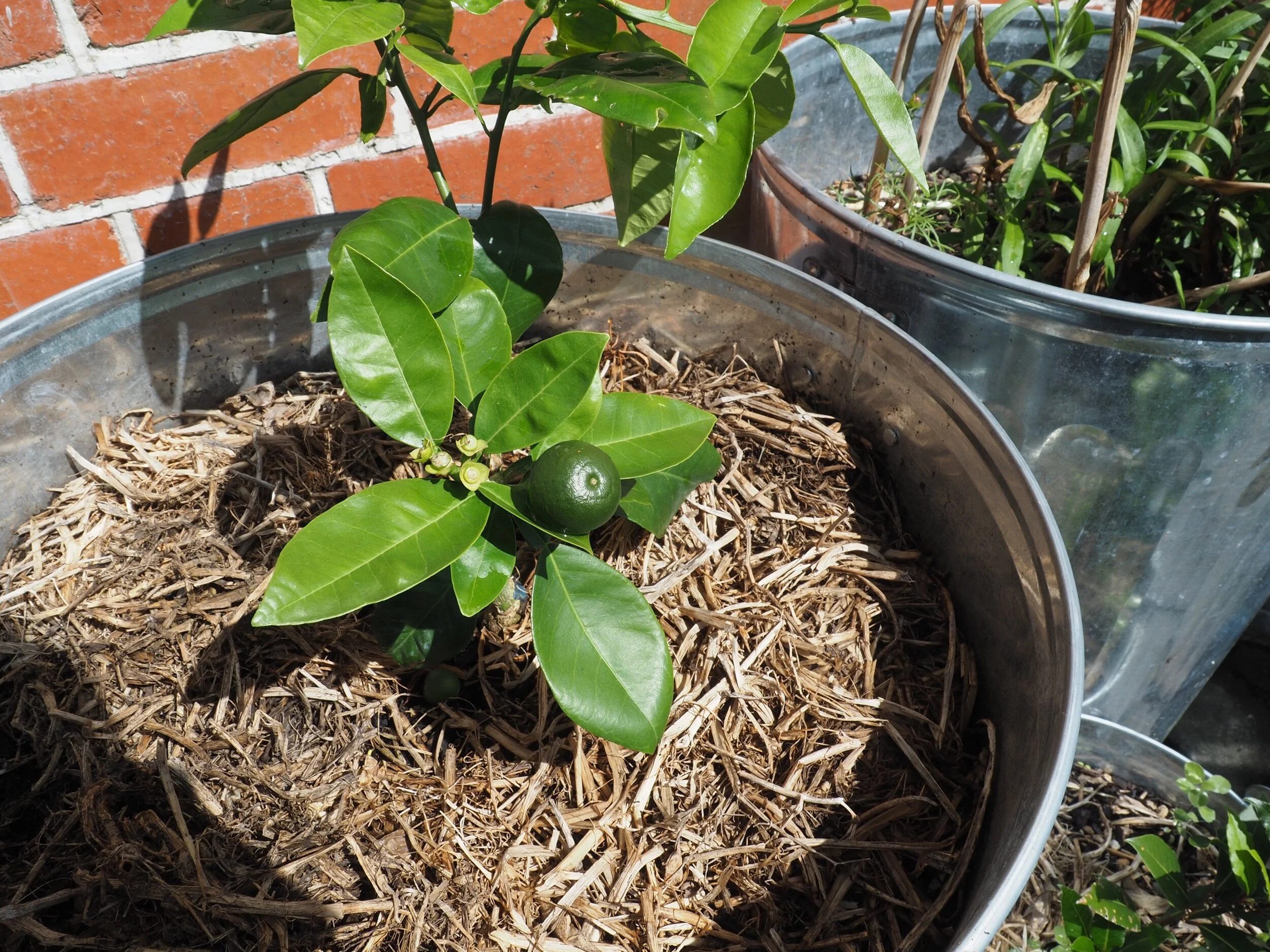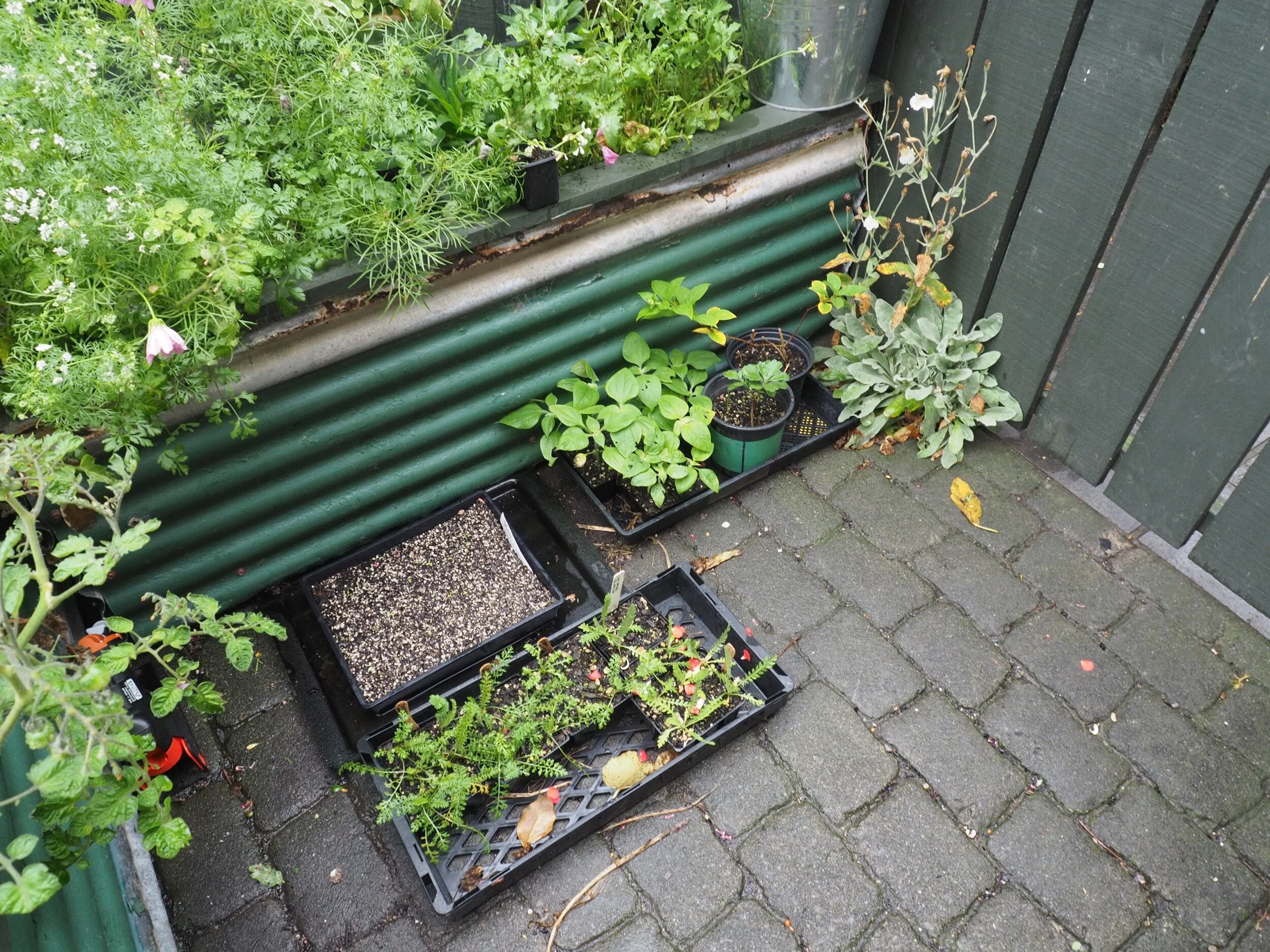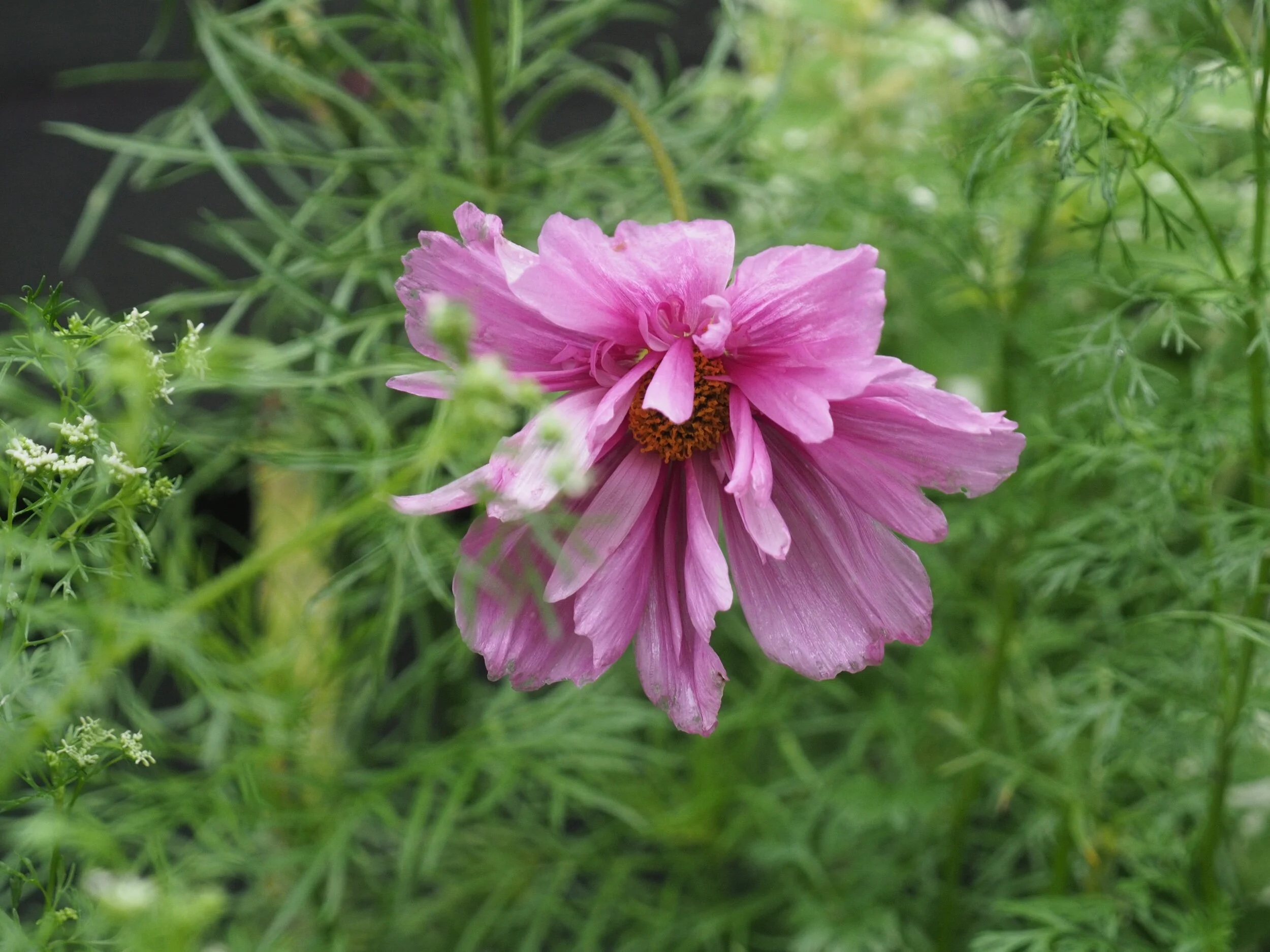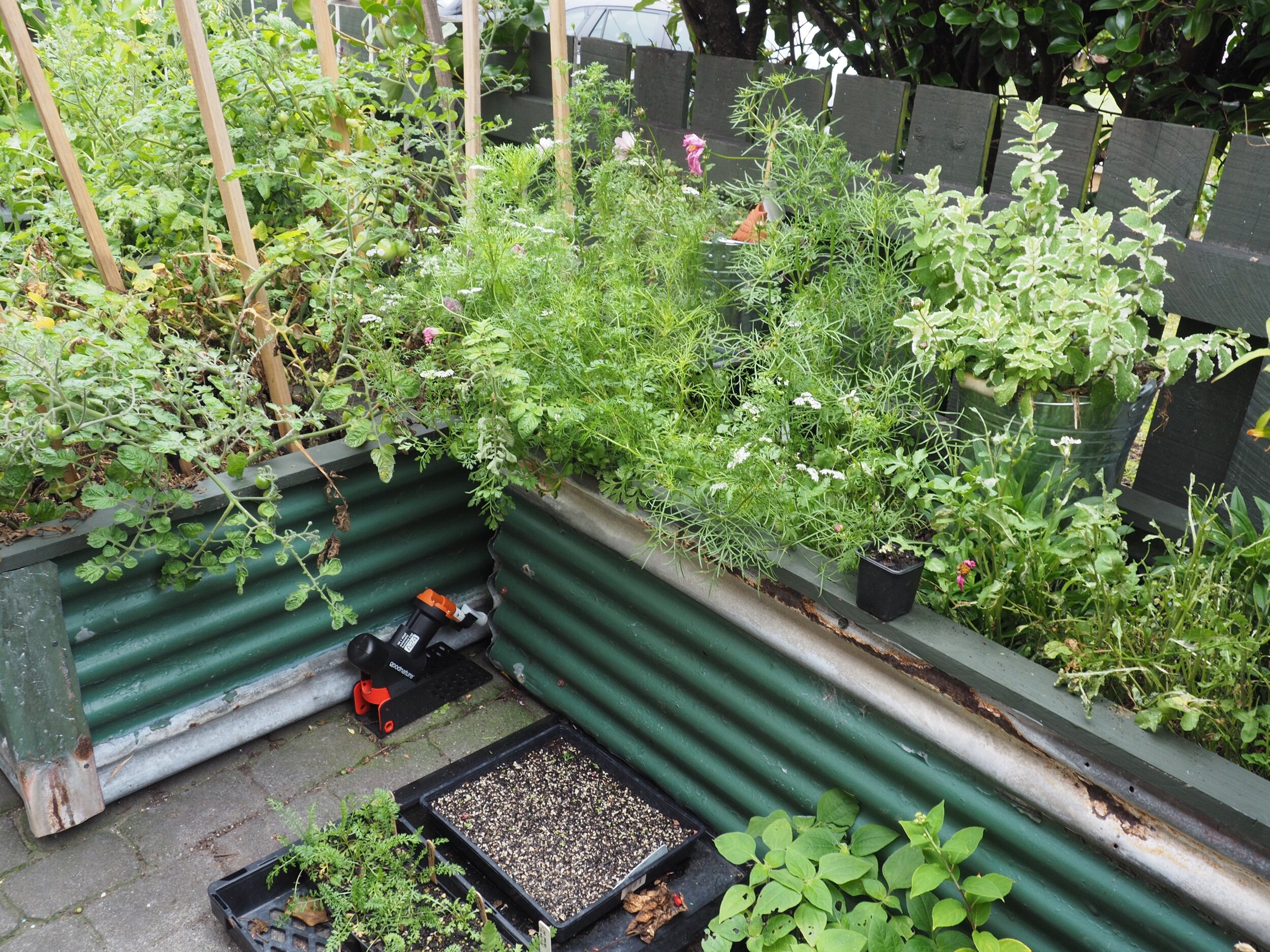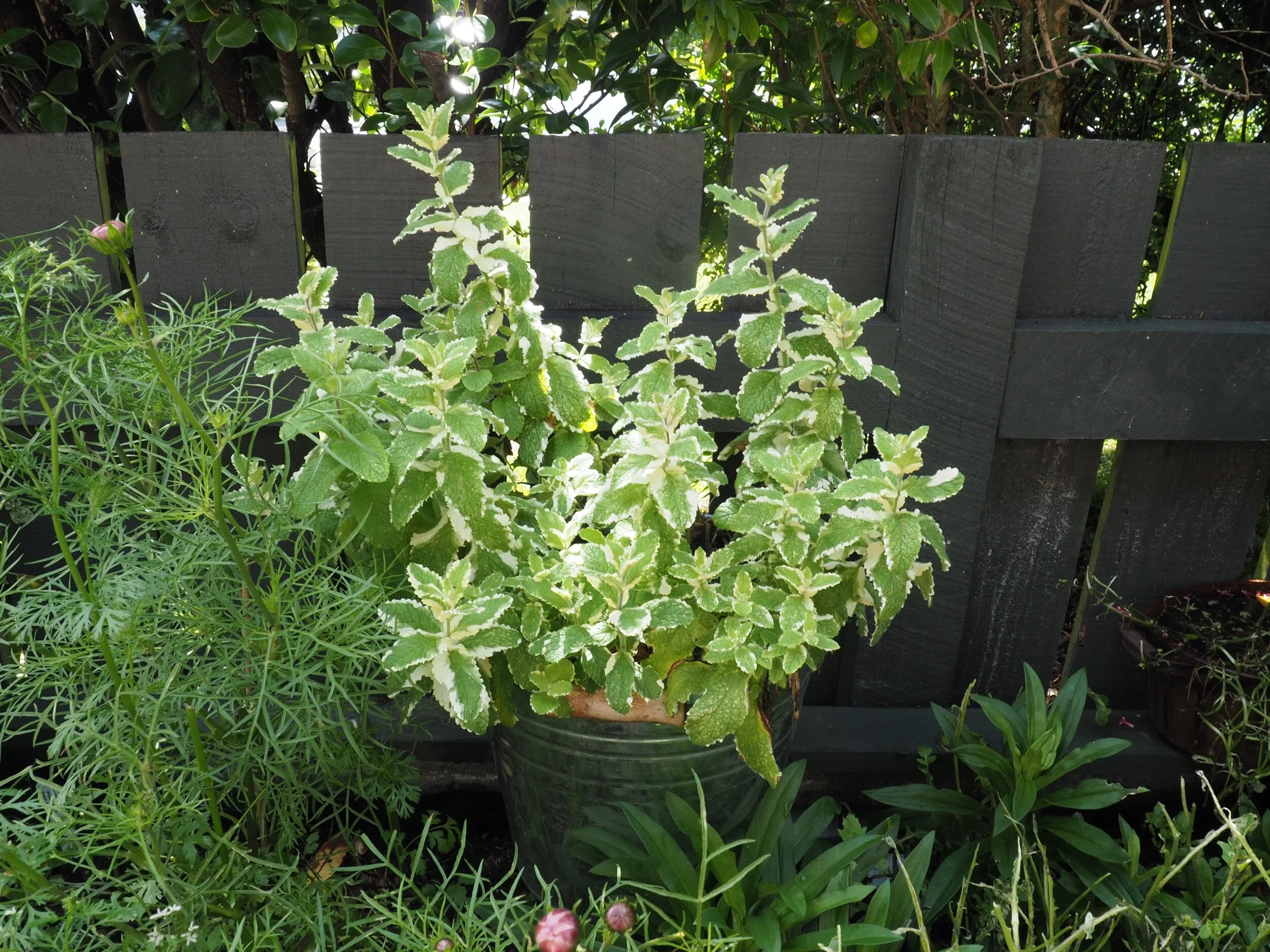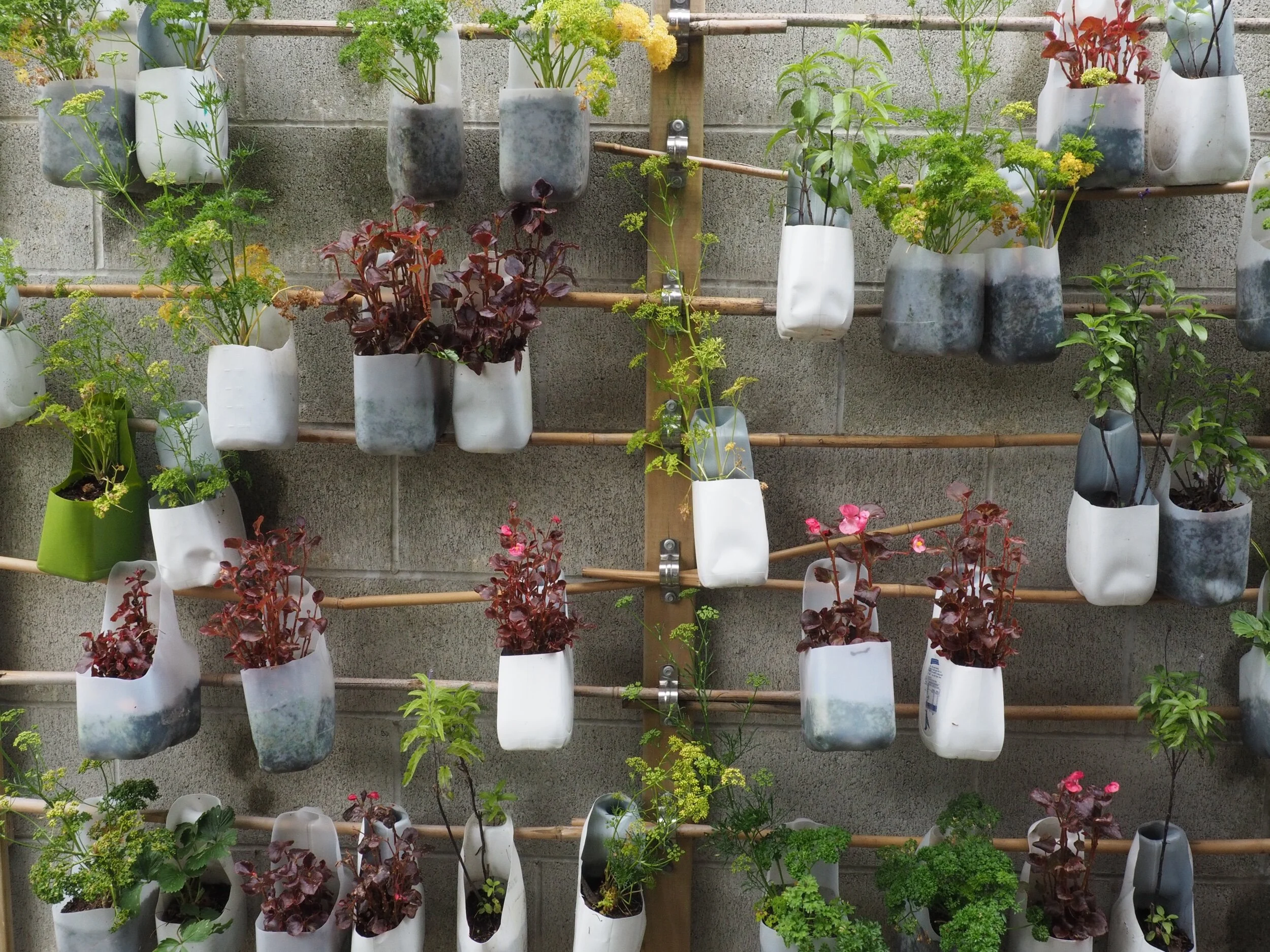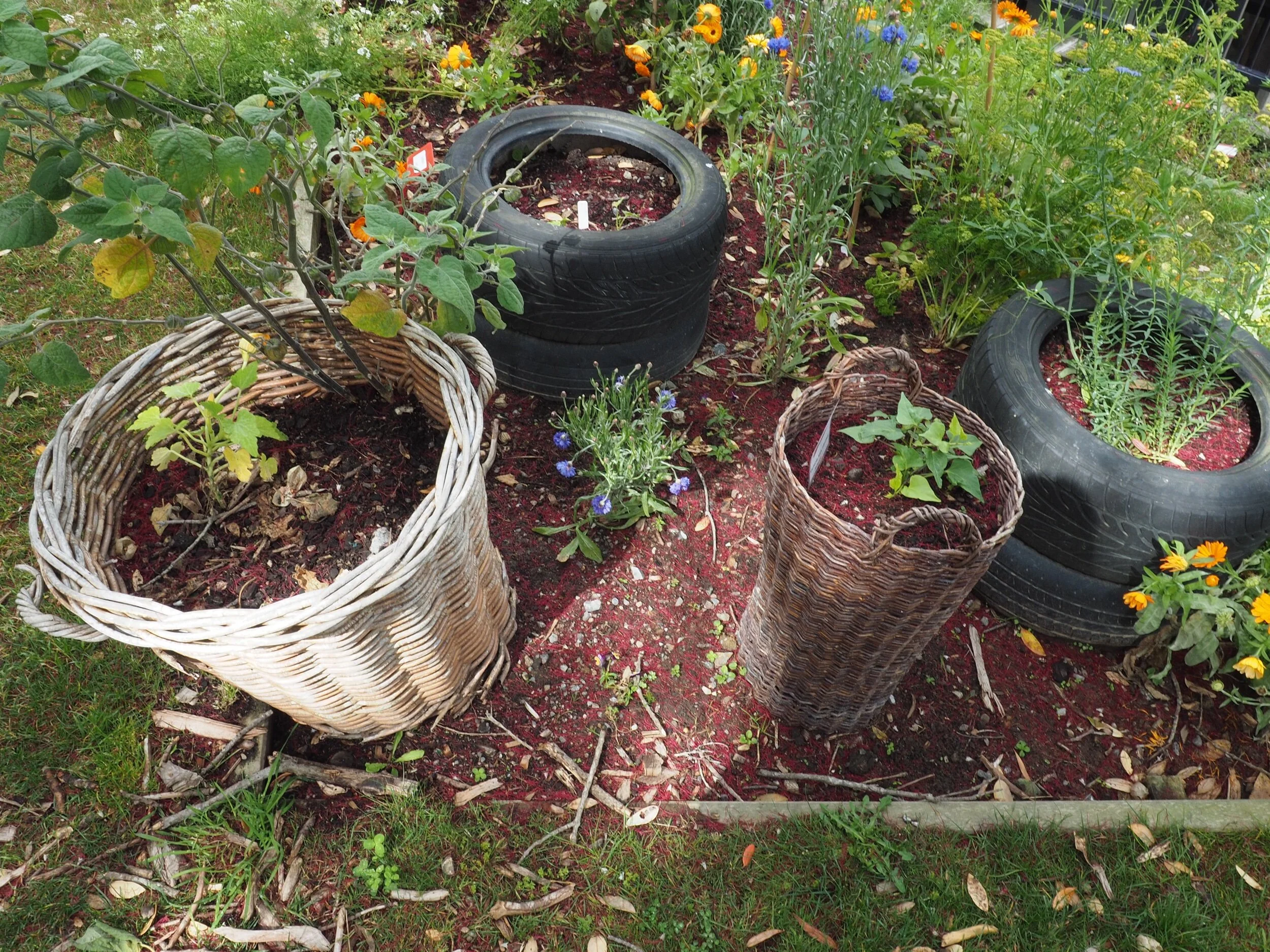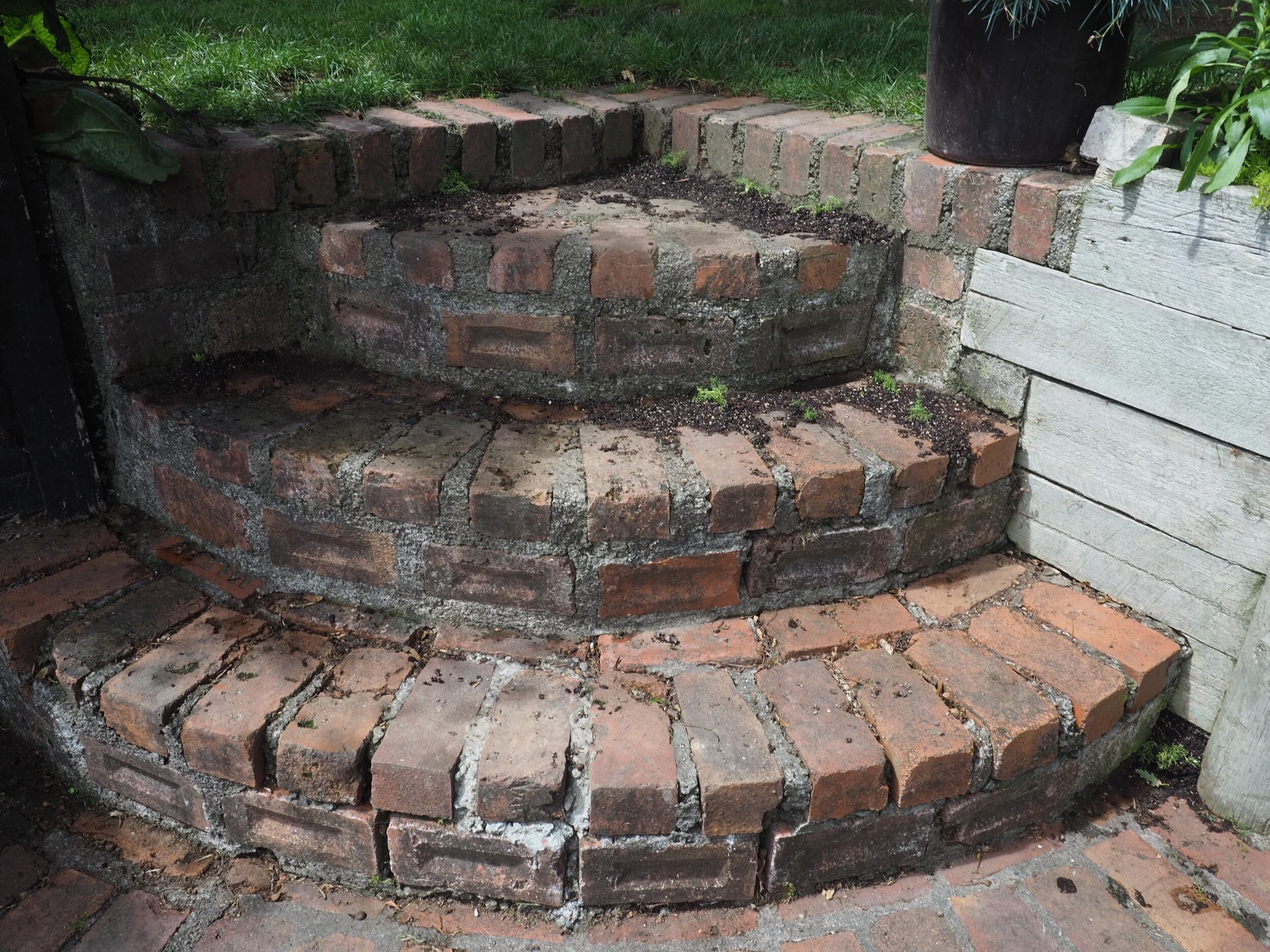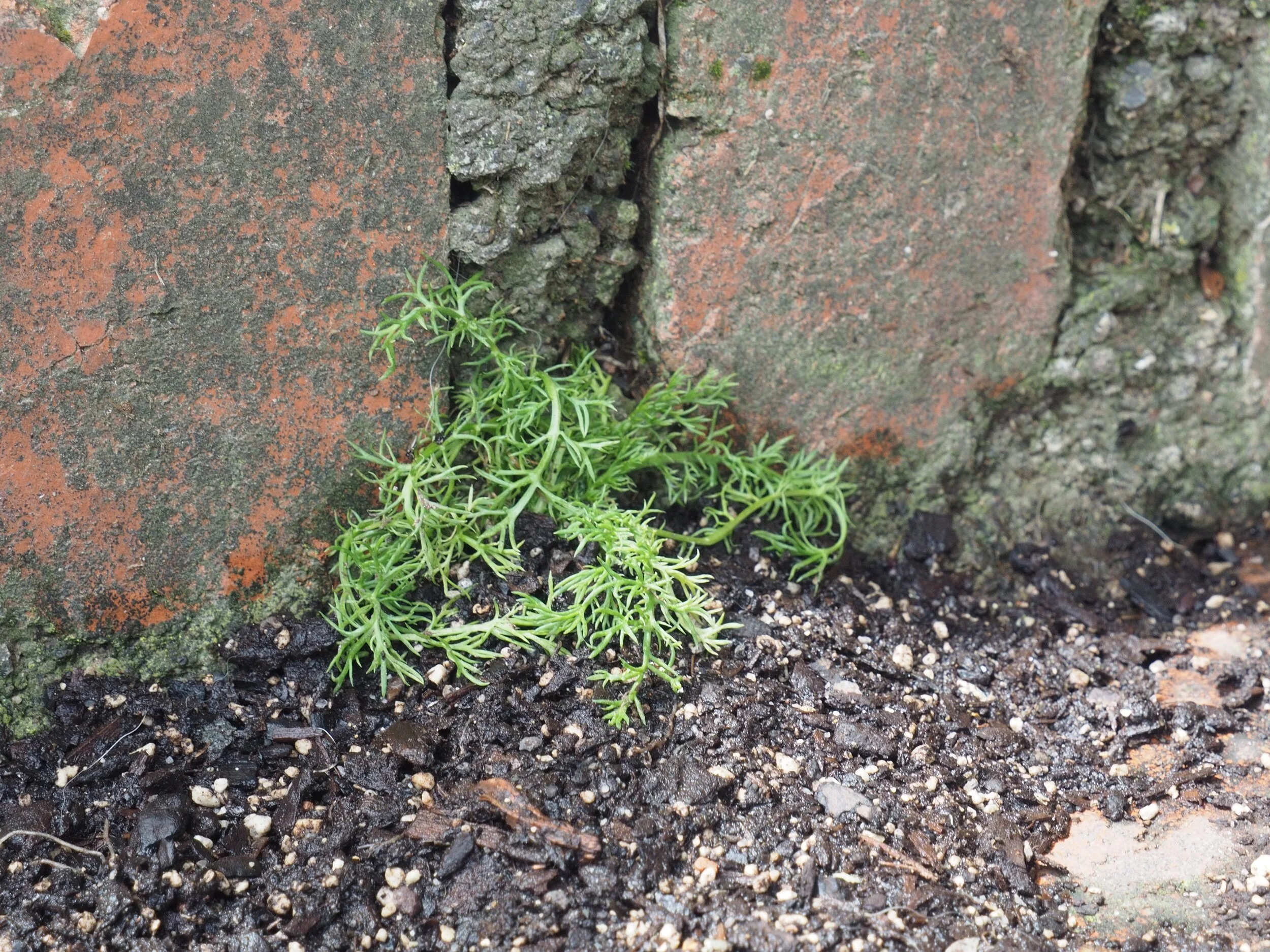I’ve never been interested in growing food, except for herbs. Herbs are like storybook characters: elfwort, knapweed, rest harrow and woad; they have personality, they have magical attributes and they’re easy to grow. But this blog isn’t about herbs, its all about vegetables.
The only person in my family who grew vegetables was my step-great-grandpa-Dell. In 1973 we lived with him while our house was getting built. He had a big vegetable garden, everything was planted in orderly rows. I remember the acrid smell of the sun warmed tomato plants every time we went out the back door. Dell had a shed beside his vegetable garden. It was more of a room than a shed because it had a table and chairs and there was a map of Disneyland tacked to the wall. He was a kind man who now and again got angry. Once he chased my mum around the house with a knife, it didn’t bother my mum, but It frightened me. He spent a lot of time in his bedroom, standing by his bay window, staring down at the front garden and the street beyond. Years later, I found out he had dementia.
Before we moved in with Dell we rented a house on a farm. I was four and my sister was three. I remember playing over at a friends house and eating corn-on-the-cob for the first time. We weren’t farmers but my friend’s parents were. His mum had grown the corn. It was summer and it was hot. My friend and I ran around on his big lawn, splashed around in his blue paddling pool and then we ate the corn. It was hot and buttery and sprinkled with salt.
Lawn brown, paddling-pool blue, tomato red and corn yellow are the colours of summer.
In November last year I decided to turn the top of our driveway into a vegetable garden. It was an eyesore, a space I’d tried but failed to beautify. Our friend Paul, who made my shed, made 4 raised beds out of recycled materials. These 4 stunning beds opened up a world of possibilities.
I’ve dabbled in the world of growing vegetables over the years, growing potatoes, tomatoes (not that they always grow well in Wellington) and rocket. Most of the time I’d get a crop, not because of anything I’d done, because I’m a neglectful gardener of food, but because plants are programmed to grow. I always forgot to pinch out the tomato shoots and tie their trunks to stakes. I always forgot to water and feed my plants. Usually the rocket had gone to seed before I ate its first leaf and the tomatoes were still green by the time autumn rolled round.
The plants I planted in the planters in November were an afterthought. They were green wallpaper for the garden tour, which I opened my garden for. I filled the raised beds with a soil/compost mix and lots of sheep pellets. Then I threw in some plants, watered them now and again. Then I forgot about them. Here’s a quick tour of my vegetable garden at the top of the drive.
Dahlia seedlings.
Thyme.
Wooly Thyme.
The view of the vegetable garden from the front porch.
The basil growing in the middle planter is grown from seed from an anonymous person. Last year I took part in ‘NZ Secret Santa’ on Instagram. I wasn’t expecting the basil to grow in Wellington. I planted the seeds with no expectation ever seeing green shoots. And to make matters worse, Wellington has had a dismal summer this year, cool and windy. But, as you can see, the basil grew.
My vege garden is a semi-walled garden. It has two fences and one brick house on three of its sides. It’s completely paved. All the hard surfaces absorb heat, not to mention the iron-clad raised beds. This area gets good but not excellent sun, some beds get more sun then others. I’m telling you this because I think that these landscape features create a micro-climate. Why else did the basil grow? It sure wasn’t anything I did.
The basil, corn and squash.
Squash.
I planted 3 squash plants between the corn plants. I’m not sure what will happen when they start to spread out, I haven’t planned for this.
Yesterday I repotted two of the blue pots (2 kinds of thyme) into second-hand containers (which I collect). The third blue pot is chamomile. I’ll show you what I did with the chamomile at the end of the blog.
I planted radishes between my spring onions and lettuces. They grew so much that the spring onions and lettuces didn’t. I didn’t eat very many. I’m the only person in my family who likes radishes. There’s a limit to how many radishes a person can eat, so a lot didn’t get pulled up. They went to seed. The bees like the radish flowers so at least the radishes are feeding some living things.
I planted corn but I don’t expect to harvest any - it’s Wellington. I planted it, in part, because of the memory of my four year old friend and me eating corn together. I don’t remember my friends name. I don’t remember what he looked like. I remember that he was fun to hang out with and that I started school visits before he did. Most likely we were the only four year olds at Hautapu Playcentre in the summer of 1972 so we had no choice but to be friends. He’s probably a farmer himself now, maybe he drives trucks or works in IT. Maybe he’s a nurse or a social worker.
See! These tomatoes have all flopped over because I never got around to tying them in properly. Shame on me.
Here are my tin bin and tin bucket pots, planted with fruit, flowers and herbs.
Chive flower.
I’ve got 2 citrus plants: a Meyer lemon and a Citrus x paradisi called ‘Grapefruit Wheeny’. Both have been battered by gale force winds this summer. Yesterday I was trying push in a stake beside the lemon (because it’d blown over). The stake wouldn’t go in the ground so I pushed harder. I should have asked myself, ‘why isn’t it going in? It should be going in, cause its in a pot with soil that is light and friable. If the stake isn’t going in it means I’ve struck a root or something important and I ought to remove the stake and choose a new spot.’ If only I’d asked myself that question, then I wouldn’t have pushed so hard on the stake that I broke it, got a splinter of bamboo in my finger and snapped off a lemon branch.
Grapefruit.
Here’ the bed (below) where I’ve planted rocket and coriander with flowers in between.
Cosmos and coriander.
The black and orange contraption is a rat trap. My vegetable garden also has a bait station full of rat poison, carefully hidden behind some wood. I’m not taking any chances with those four-legged devil’s minions.
Watercress.
Variegated mint.
The acquiring and reading of gardening books is just as important as the gardening itself. They motivate, inspire and inform. There are 2 books in particular that have made me excited about growing food.
The first book I bought second hand for $3.00, ‘Creative Vegetable Gardening – New Edition’ by Joy Larkcom, 2004. If it hadn’t been for this book I wouldn’t be writing this blog. Joy has shown me that a food garden can be a beautiful garden. She reintroduced me to the idea of ‘The Potager’. Here’s an excerpt from the book. She defines the word ‘potager’.
‘The term, which some people find pretentious and others puzzling, has crept into usage since the eighties to describe a decorative vegetable garden. There is no straightforward answer to the question ‘What is a potager?’, because the term has come to embrace two styles of gardening – humble on the one hand and grand on the other – as well as various sorts of gardens inbetween.
At the humble end, ‘potager’ is the French word for kitchen garden, derived from its original role in providing the ‘pot herbs’ for soup or ‘potage’….Then there’s the world famous ‘potager’ at Château Villandry in the Loire Valley. This renaissance kitchen garden, which is laid out in patterned parterres outlined in box edging, is a glorious tapestry of texture and colour created by the skillful planting of vegetables and herbs. It has been so influential…that ‘potager’ has also come to mean formal, designed, ornamental garden…
At the less formal end of the scale some are barely distinguishable from the traditional cottage garden. Of course the old French ‘potager’ was itself a cottage garden, with fruit bushes and trees cultivated alongside vegetables which, in turn, mingled with both herbs and flowers, grown for medicinal and culinary use.
It seems appropriate to steal the word ‘potager’ and apply it today to any vegetable garden, of whatever size, which has been touched with the paintbrush of imagination.’
Thanks to Joy I have permission to grow flowers with my vegetables. I have permission to rank beauty equally with utility.
The second book I bought (new) is ‘Grow Fruit & Vegetables in Pots – Planting Advice & Recipes From Great Dixter’ by Aaron Bertelsen, 2017. Aaron is a New Zealander but he lives in the UK and gardens and cooks at Great Dixter.
I’m excited by the challenge of making a vegetable garden on a small paved driveway. People in townhouses and apartments must face similar challenges (size and a lack of soil). Aarron’s book is directed at just these sorts of gardeners. He also provides simple, delicious looking, recipes for the vegetables and fruit he writes about. He makes container gardening look fun, achievable and, most importantly, beautiful!
Here’s an excerpt. ‘One of the great advantages of container growing is that it is easy to extend the growing season. Many plants will benefit from the additional warmth found close to the house or apartment, and it is the work of a few seconds to throw a pieces of fleece or hessian over the more vulnerable plants.
Another bonus of container gardening is there is no back-breaking digging, and you are free to create compost (potting soil) mixes to suit the needs of individual crops – light soil for carrots and parsnips, acidic for blueberries and so on. A container garden, also provides opportunities to grow unusual varieties or hard-to-obtain ingredients, such as that obscure herb you need for your favourite curry but can never seem to find in the shops.’
Here are a couple of pictures (above and below) of food gardens at the Children’s Garden at the Wellington Botanic Garden. I especially like the old wicker baskets used as a miniature raised bed.
In my last blog I wrote about turning my weedy brick courtyard into a beautiful garden. A herb-come-rockery to be precise. I’ve made some progress, starting on the top steps.
I killed the weeds on the steps using boiling water mixed with salt. I watered them 3 times with this brew. As you can see they’re all dead. Of course they’ll be back, but I’m hoping the new plants will crowd them out. Yesterday I divided up a chamomile plant and planted little bits of it (each with a few roots) into the small gaps. I decided to use recycled seed-growing-mix (as the growing medium) because of its fine texture and good drainage (thanks to lots of grit).
Last night it poured with rain. I was pleased to see that my little plants and their special soil hadn’t washed away. They were exactly where I left them the day before, looking very perky.

